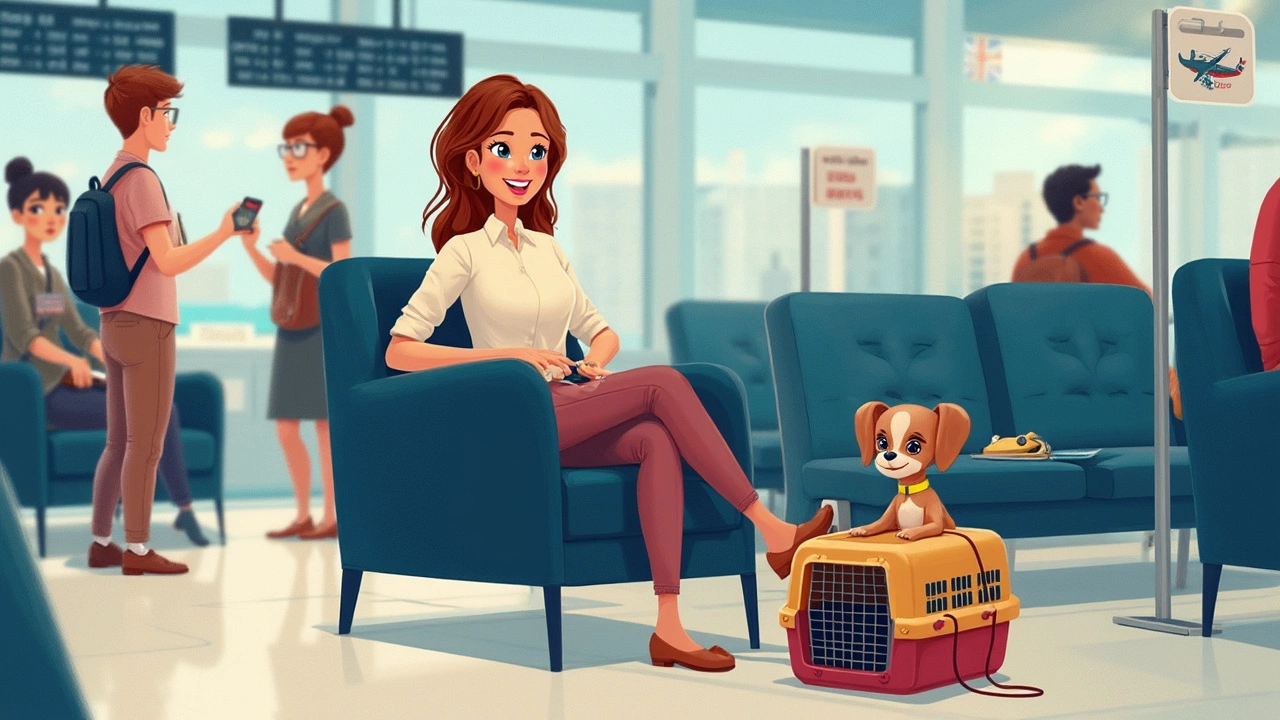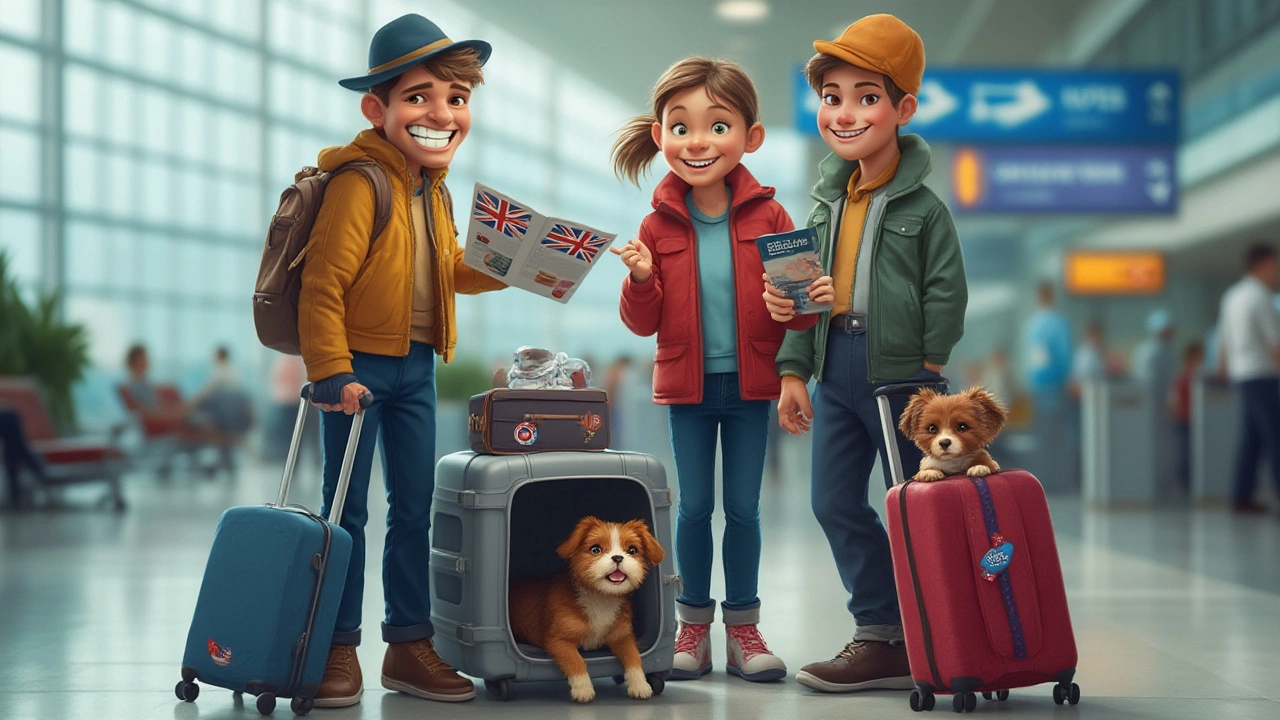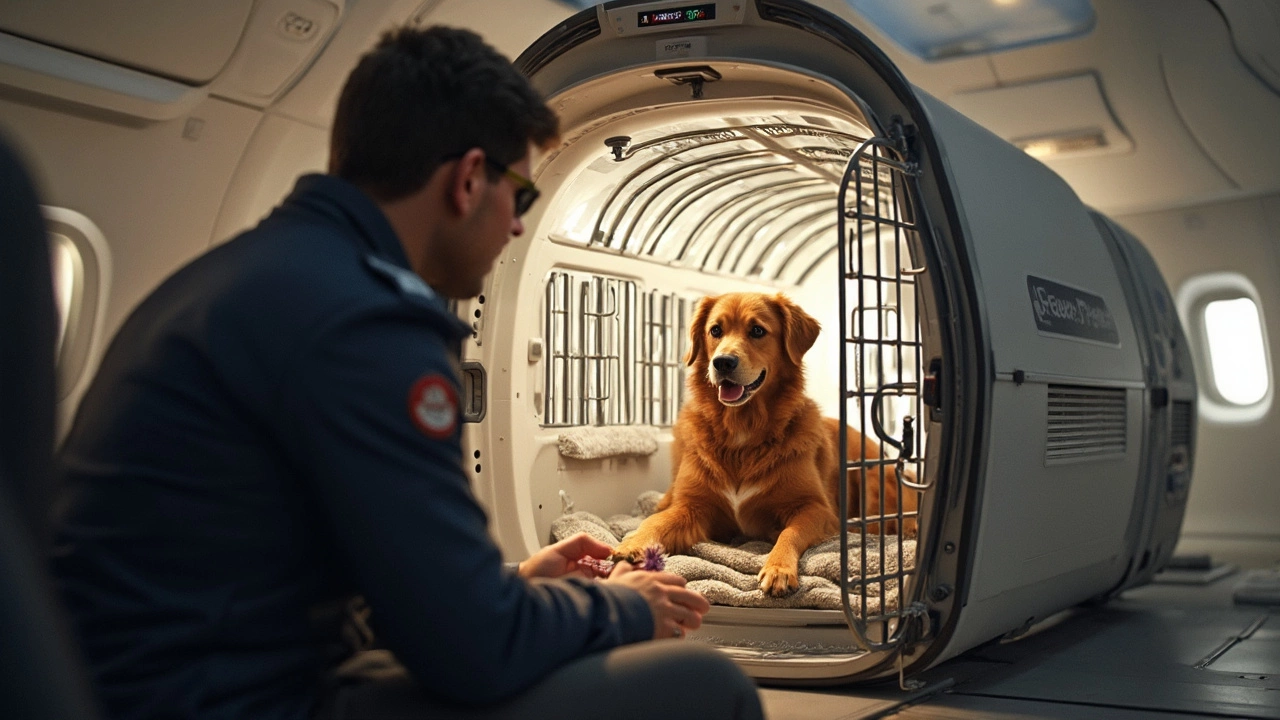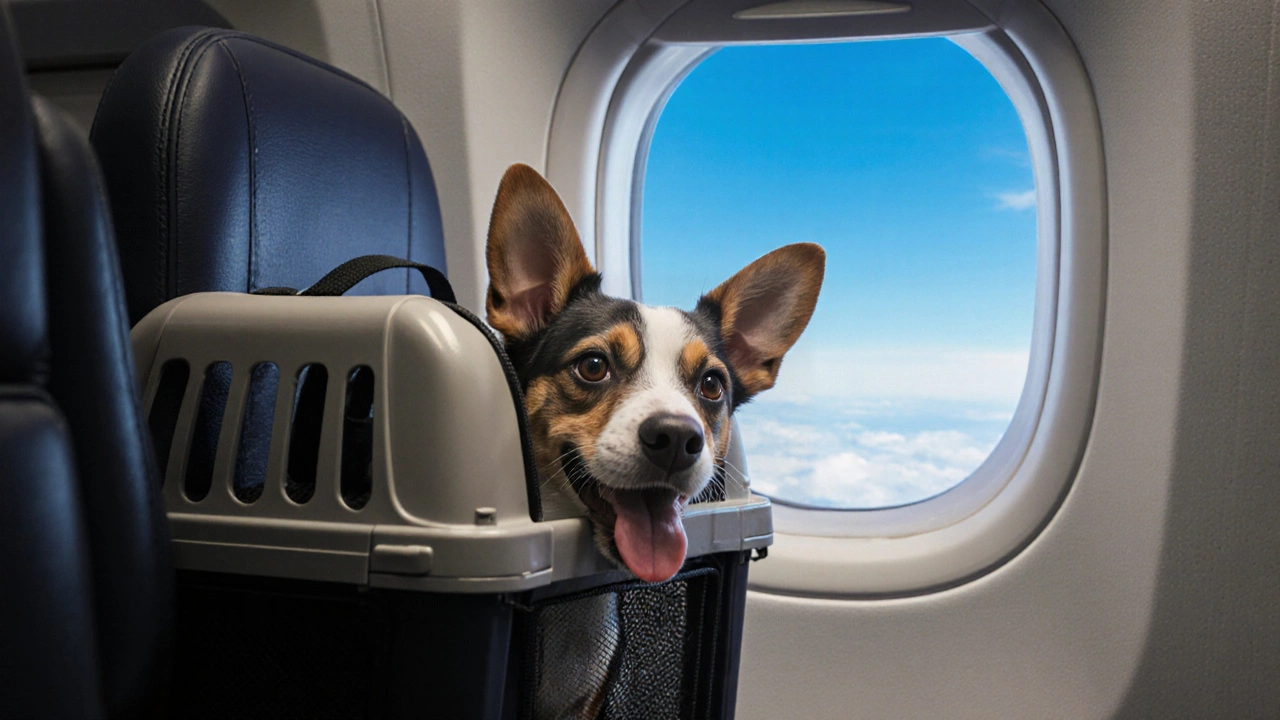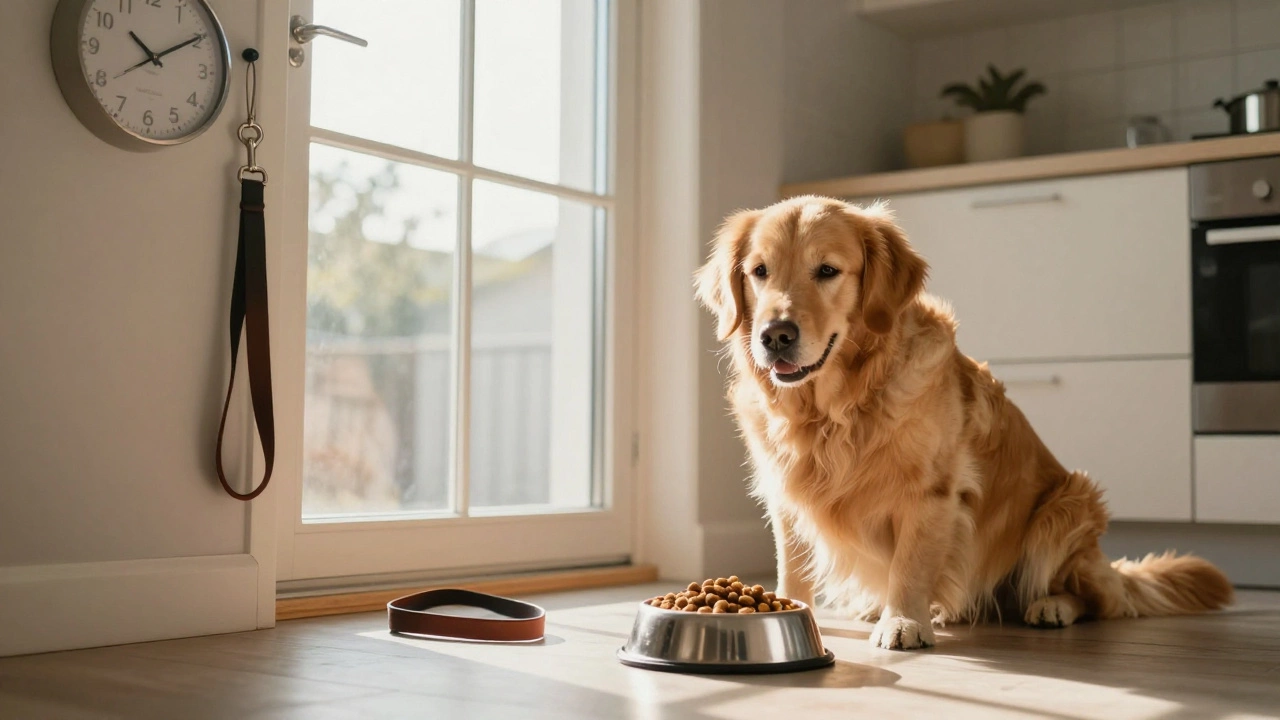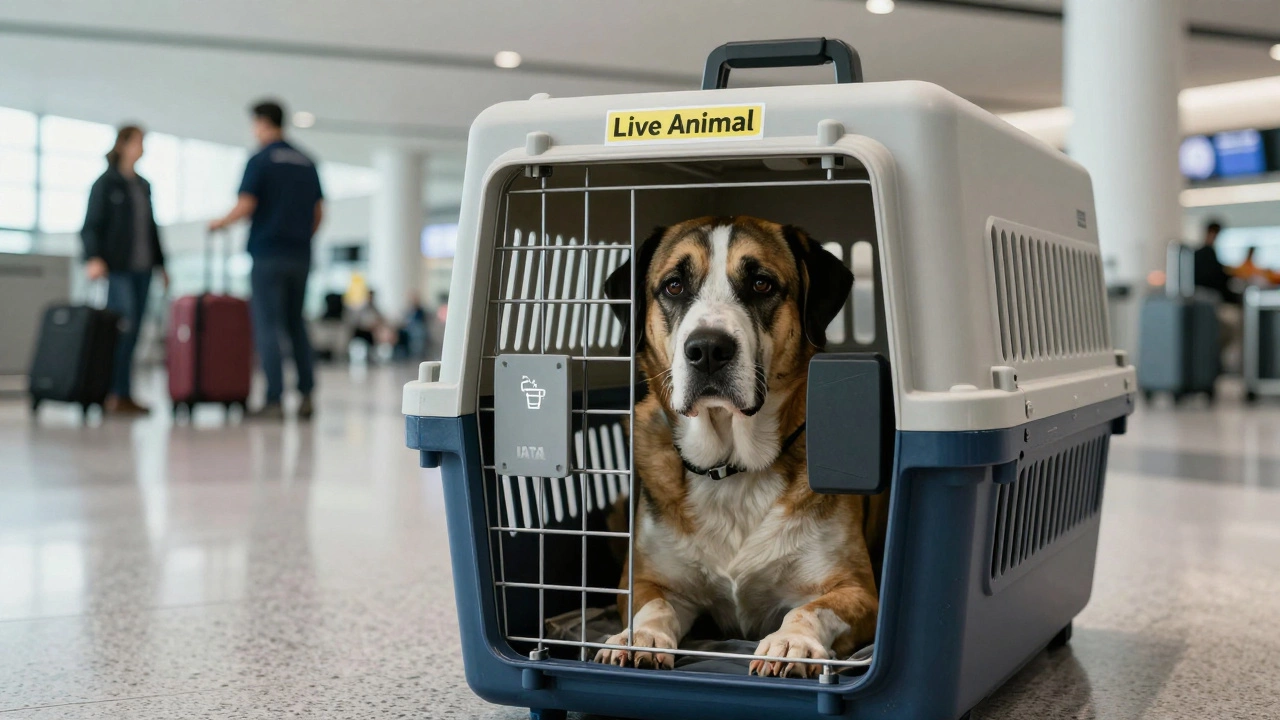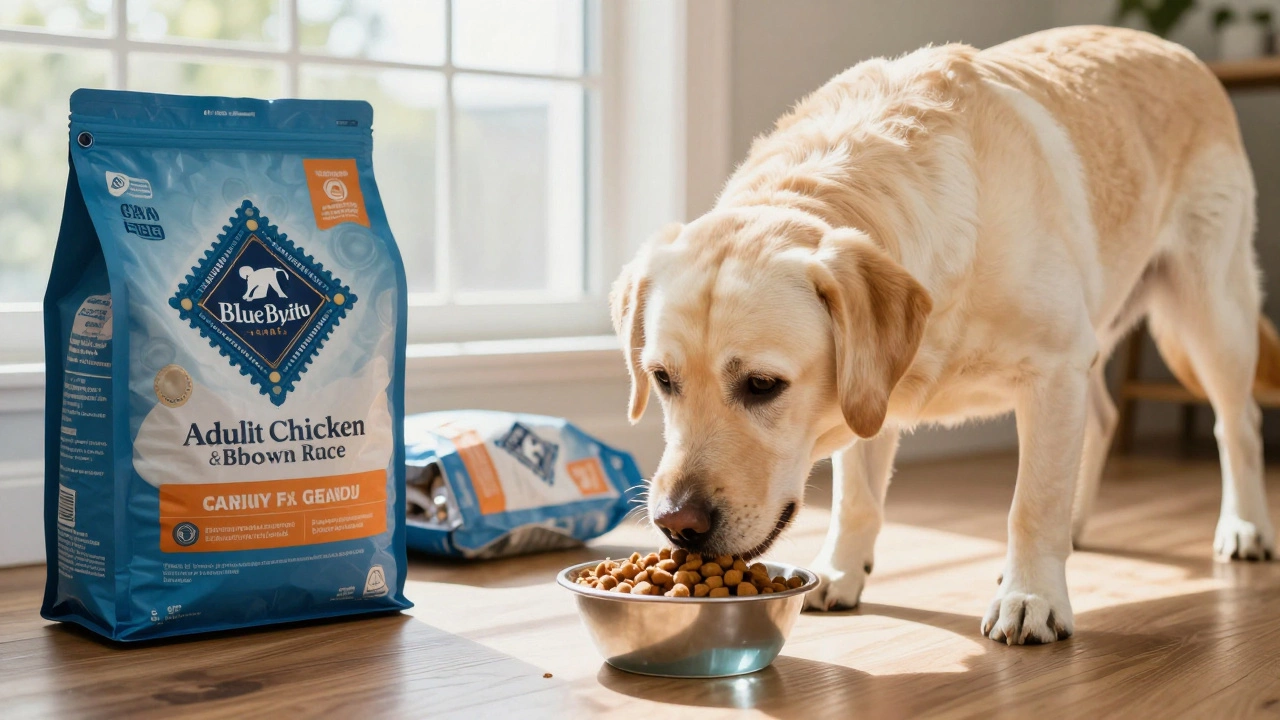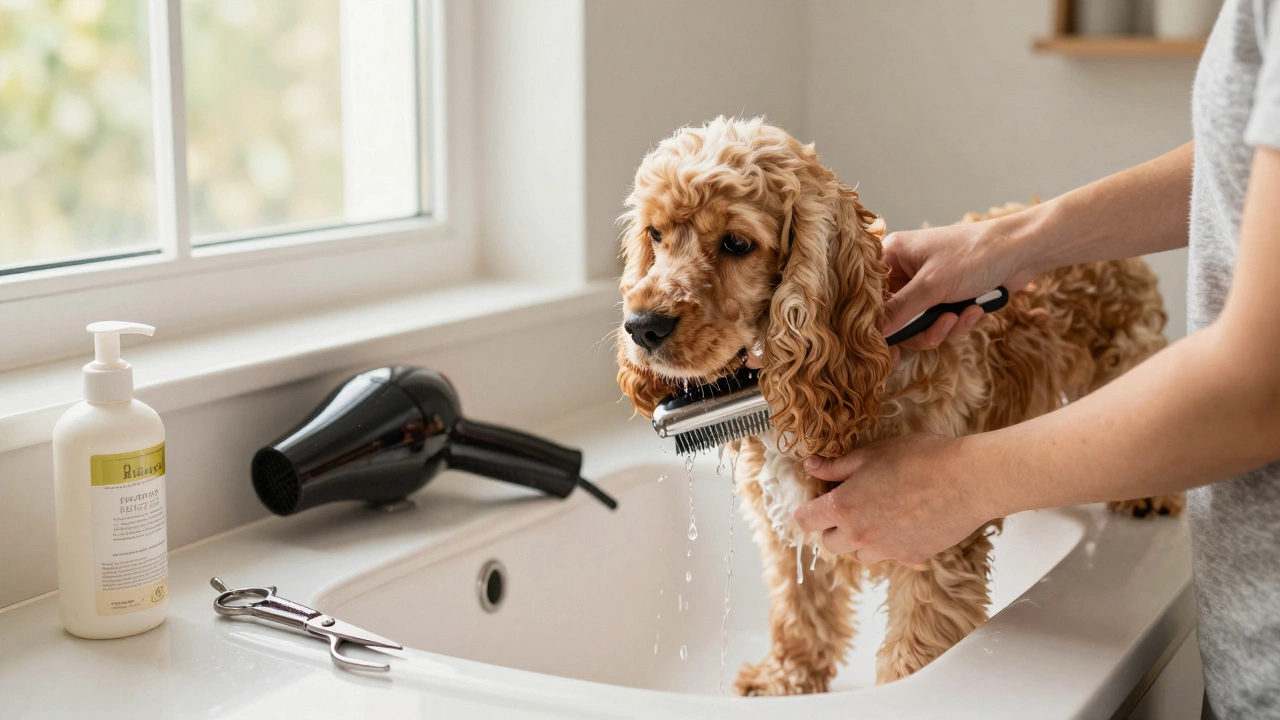Ever wonder if your dog can just chill on your lap during a flight? You're not alone—this is probably the most common pet-travel question I get. The truth is: most airlines have pretty clear rules, and they aren't as loose as people hope. Usually, your dog needs to stay inside a pet carrier, tucked under the seat in front of you, the whole time.
But here's the catch: some folks have spotted dogs sitting on laps mid-flight and figured it must be allowed. It's tempting, especially when a nervous pup just wants comfort. But unless your dog is a certified service animal, most airlines won't budge on their rules. Plus, there are different policies for different airlines, and sometimes, flight attendants might look the other way—until they don't.
So, how strict are these rules? What counts as a tiny enough dog for a carrier? And are there workarounds when you're desperate? Let's clear up what's actually possible and what could get you and your pup in hot water.
- What Airlines Say About Dogs on Laps
- Size, Breed, and Carrier Rules
- Service Dogs and Exceptions
- What Happens If You Break the Rules
- Tips for a Smooth Flight With Your Dog
- Stories From Travelers Who Tried It
What Airlines Say About Dogs on Laps
So here’s the deal: airlines in the U.S. don’t really want your dog travel dreams to include lap time. The big guys—think Delta, United, American, Alaska, JetBlue, and Southwest—are all on the same page. Their policies specifically say pets have to stay in an approved carrier, no exceptions for being cute or small.
Let’s get specific. On Delta and United, for example, the rules spell it out: your dog in cabin must be inside a soft-sided carrier that fits under your seat. Same goes for JetBlue and Southwest—they want your pup zipped up throughout the flight. Even if that carrier is right at your feet, they don’t want paws popping out or little heads sticking up for a peek. "Lap dogs" might be a thing at home but not at 30,000 feet.
American Airlines actually says it super clearly: pets must remain in their container at all times inside the cabin. I once saw a flight attendant politely ask a woman to put her chihuahua back in the carrier three separate times—nice but firm.
International airlines aren’t much more flexible. For example, Air Canada, British Airways, and Lufthansa all have "carrier only" rules for regular pet passengers. You might find a few airlines in other countries with slightly looser policies, but that’s the exception, not the rule.
Here’s a quick look at some of the major U.S. airline policies:
| Airline | Lap Sitting Allowed? | Policy Highlights |
|---|---|---|
| Delta | No | Carrier under seat, no lap sitting |
| United | No | Carrier under seat, carrier zipped |
| Southwest | No | Carrier under seat, carrier must close completely |
| JetBlue | No | Carrier under seat; dog stays inside |
| American | No | Carrier under your seat at all times |
There’s only one real exception: service animals. Trained service dogs (not emotional support animals; airlines changed the rules in 2021) can sit at your feet, sometimes on your lap if they're small enough and you don't block the aisle. But for everyone else, lap time is officially off-limits.
If you’re caught ignoring these pet travel rules, be ready for a warning. Sometimes you’ll get a gentle reminder. Next step? They might boot you off the flight or ban your dog on plane travel in the future. It’s not worth the risk.
Size, Breed, and Carrier Rules
This part trips up a lot of travelers. Airlines are super picky about pet size and what kind of carrier you use. Here’s what’s going on with dog travel in the cabin:
- Your dog has to fit comfortably inside an airline-approved carrier. Most airlines want the carrier to slide right under the seat in front of you.
- If you’re flying with a popular U.S. airline, expect the carrier to max out at about 18” long x 11” wide x 11” high. Check with your airline, though—the numbers change from airline to airline.
- The total weight of the dog and carrier is usually capped at 15 to 20 pounds. Dogs much bigger than a loaf of bread? Sorry, they're probably riding in cargo.
- Airlines usually only allow one pet per passenger in the cabin.
- Some airlines, like JetBlue and Alaska, let pets poke their head out during the flight if you’re discreet. Most airlines say the pet must stay in the carrier unless you’re passing through security or briefly at the gate.
Breed can be a deal-breaker, too. Most airlines refuse to allow snub-nosed breeds—think French Bulldogs or Pugs—in cargo because of breathing risks. In-cabin? You’re usually fine if the dog fits the size rules, but double-check if you have a Chihuahua, Yorkie, or Shih Tzu. Bulky, muscular breeds like Staffordshire Terriers and Pit Bulls are banned by many airlines altogether. Strong restriction here is safety, not discrimination.
Here's a quick comparison table for some major U.S. airlines:
| Airline | Max Carrier Size (inches) | Pet + Carrier Weight Limit | In-cabin Breed Restrictions |
|---|---|---|---|
| Delta | 18 x 11 x 11 | 20 lbs | No snub-nosed breeds |
| United | 17 x 12 x 7.5 | 18 lbs | No snub-nosed breeds |
| Southwest | 18.5 x 8.5 x 13.5 | 15 lbs | Breed-neutral but size enforced |
| American | 18 x 11 x 11 | 20 lbs | No snub-nosed breeds |
The bottom line: before you show up with your furry buddy all excited about flying with dogs, check your airline’s website. Pay extra attention to the fine print. Rules change, and what's okay on one carrier could get you turned away on another. Never wing it—gate agents rarely make exceptions, especially if a flight’s full or a fellow traveler complains about allergies. Better safe than sorry.
Service Dogs and Exceptions
This is where the rules shift. If your dog is a service animal, things look a little different than with regular pets. The law actually protects your right to fly with a trained service dog, and most major airlines follow the U.S. Department of Transportation (DOT) guidelines. That means a real service dog—think: a dog trained to help with a disability—can usually sit at your feet or even in your lap, if it fits safely.
There's a big difference, though, between service dogs and emotional support animals (ESAs). Starting in 2021, most U.S. airlines stopped accepting ESAs as "service animals." So while you might've seen someone with a Chihuahua in their lap and an ESA vest a few years ago, that's almost never allowed now. Unless your dog is trained to perform a specific task related to a disability, the airline expects it to behave like any other pet—meaning in a pet carrier and not on your lap.
Still, for actual service dog handlers, airlines may ask for paperwork or an online form (check each airline's website before you fly). They might also want details on the dog's training and their behavior history. Problematic behavior (biting, barking, making a mess) could get your dog booted from the cabin, no matter what paperwork you have.
- Service dogs fly for free on most U.S. airlines.
- Your dog must be on a leash or harness at all times.
- Larger dogs might need to lie at your feet—not all airlines allow dogs in laps, even if they're small, for safety reasons.
- Cruise through security: TSA will likely want you to walk your dog through the metal detector, off-leash but under your control.
To get a feel for what airlines actually require, here's a quick snapshot of their service dog policies:
| Airline | Service Dog Policy (2025) |
|---|---|
| Delta | Accepts only trained service dogs. Required DOT form. Dog must fit by your feet. |
| American Airlines | Same as above. ESAs treated as pets now—carriers needed. |
| United | Similar rules. Extra strict about behavior. No lap dogs unless medically necessary and safe. |
Bottom line? If your dog is not a fully trained service animal, don't expect any exceptions. For everyone else, stick to the pet policy, keep your dog travel documents ready, and play by the book—flight attendants see it all and know the difference.
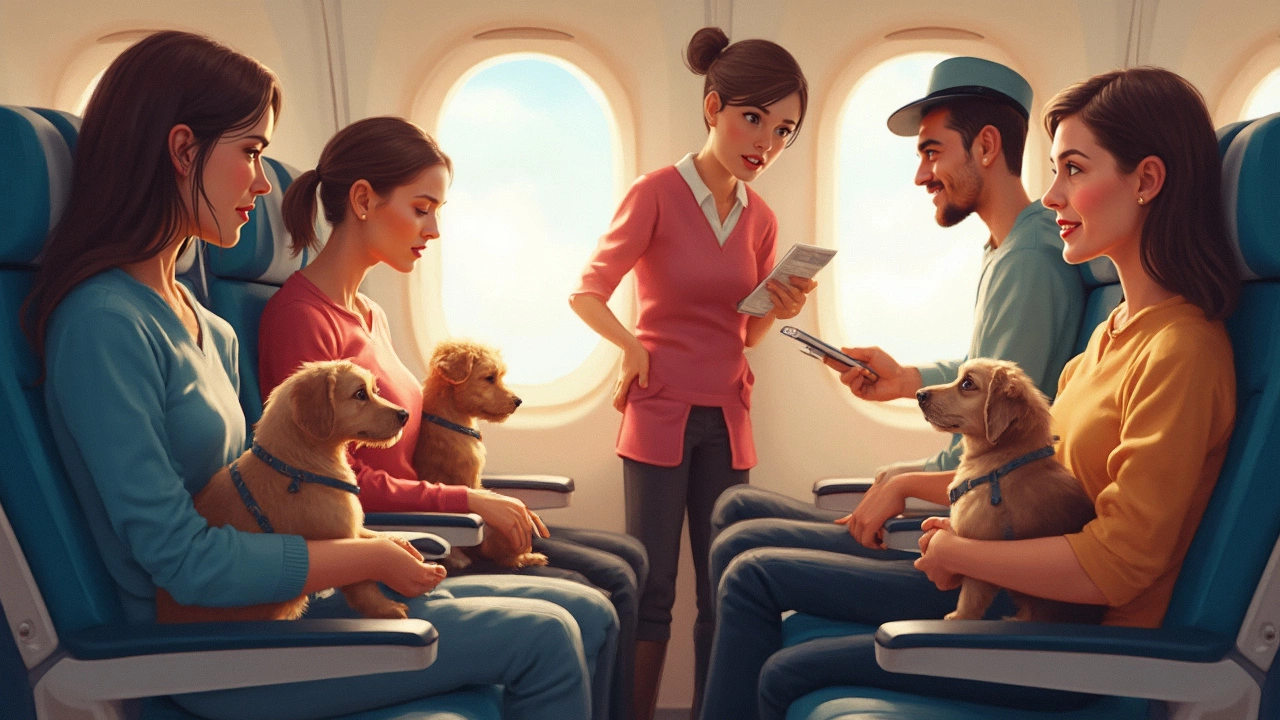
What Happens If You Break the Rules
If you decide to take a chance and let your dog out of the carrier or sit on your lap during a dog travel flight, there are real consequences. Each airline has its own pet policy, but most are strict once you’re in the air. Flight crews watch for any animal that's not secured, especially after COVID-19 when rules tightened up for cleanliness and safety. You might think, "It’s just a small dog," but airlines don’t make exceptions unless your pet is a registered service animal.
So, what can really happen? First off, a flight attendant will usually ask you to put your pet back in the dog in cabin carrier—no questions asked. Ignoring this can escalate fast. Here’s what’s likely:
- Official warning: Crew will tell you it’s against the rules. This goes on your travel record if you ignore them.
- Removal from flight: If you refuse to comply before takeoff, they can kick you off. Even if the plane’s about to leave the gate.
- Fines or extra fees: Some airlines can charge you a penalty for breaking pet pet travel rules.
- Permanent ban: Repeat offenses or causing drama might land you on that airline’s no-fly list, which sounds extreme—because it is—but it does happen.
Airlines log pet incidents, and in 2023 alone, there were more than 400 official reports in the U.S. about pets not being kept in carriers on domestic flights. Airlines get dinged by aviation authorities for breaking the rules, too, so they take it seriously.
| Consequence | How Often It Happens (2023, U.S.) |
|---|---|
| Verbal/Written Warning | 250+ |
| Removal from Flight | 75 |
| Fines/Bans | 10+ |
The bottom line? You might get a few minutes of comfort with your furry friend, but if you get caught, it messes up your trip—and maybe your whole travel future with your dog. It's just not worth the risk.
Tips for a Smooth Flight With Your Dog
Traveling with a pup on a plane can be nerve-wracking, but with the right prep, both you and your dog will have an easier time. Many people don't realize that getting your dog travel experience right actually starts before you even book your seat.
Here’s how to set yourself—and your pet on plane—up for a way smoother ride:
- Pick the right airline: Not all airlines are pet-friendly, and their rules can differ a lot. Delta, American, and Alaska Airlines are often better choices for dog in cabin travel because they have straightforward pet policies and allow small dogs in carriers in the cabin. Double check carrier size limits, since each airline is picky about what fits under the seat.
- Book early: Most airlines limit the number of pets per flight. If you wait too long, you might end up without a spot for your pup. Booking a direct flight helps avoid layover stress—for both of you.
- Get a comfy carrier: Your dog will probably have to stay in that carrier the whole flight, so make it comfortable. Look for something with good ventilation, enough space for your dog to turn around, and a soft, washable lining. Practice at home: let your dog chill in the carrier for short sessions so the flight feels less scary.
- Exercise first: Before heading to the airport, take your dog for a long walk or play session. A tired pup is less likely to fuss, bark, or whine.
- Limit food and water: Give your dog a light meal a few hours before the flight to avoid accidents. A quick bathroom break before entering the terminal is a must. Bring pee pads just in case.
- Bring distractions: Chew toys, treats, or a favorite blanket can help your dog feel safe and occupied. But skip anything noisy or messy.
- Pack paperwork: Some airlines want to see vaccination records or health certificates for your pet travel. Keep these handy, especially for international flights—rules are a whole different level once you leave the country.
Thinking about seats? Window seats give you a bit more privacy and avoid the hassle of people squeezing past. Bulkhead seats, even if they seem roomier, usually don’t allow bags or carriers in front during takeoff or landing—so under-seat space is key.
Statistically, according to a 2022 survey by the American Pet Products Association, around 11% of U.S. pet owners have traveled with their pets by air. Those who practiced with their pets in carriers a week leading up to the trip reported a much easier flight experience in 8 out of 10 cases.
Don’t be afraid to ask flight attendants questions—they see traveling pets all the time and usually have good tips. Relax, stay as calm as you can, and remember: your energy rubs off on your dog. If you’re chill, your pup’s more likely to be chill, too.
Stories From Travelers Who Tried It
So what happens when people actually try to let their dog sit on their lap during a flight? The stories are a lot more mixed than you might guess. Some folks get away with it, some get warnings, and others find themselves arguing with flight attendants or even getting kicked off flights. If you’re searching for real-life clues, these stories shed light on how strictly pet travel rules are enforced—and what you risk if you try to bend them.
Here’s one example: Lindsey, flying Delta with her four-pound Yorkie in 2024, decided to sneak her pup onto her lap once the plane was cruising. Things went smoothly for a bit, but once flight attendants saw the pup, she was firmly told to get the dog back in the carrier. Lindsey says, “They told me the policy was strict and made it clear: next time, I could get booted off the flight for breaking the rules.”
On Southwest, another traveler, Jay, said he managed to keep his Chihuahua on his lap for almost the entire flight. But he noticed the crew was unusually relaxed. “One attendant even joked about how small he was,” Jay said. But when he tried a similar move with another airline, it was a totally different story—crew members insisted on having his dog zipped up every time they came by.
If you search pet forums, there’s never a guarantee. Some airlines really do watch for dog in cabin rules, especially if you’re on a route with lots of passengers. Here’s a quick look at a few major U.S. airlines and their track record with lap dogs, as shared by real travelers:
| Airline | Lap Dogs Allowed? | Enforcement (Reported by Travelers) |
|---|---|---|
| Delta | No (except service dogs) | Strict. Expect warnings or forced compliance. |
| Southwest | No (except service dogs) | Can be lenient, but not always—depends on crew. |
| American | No (except service dogs) | Usually very strict, especially on busy flights. |
| Alaska | No (except service dogs) | Some pet owners reported flexibility if the dog is quiet and small. |
A friend of mine tried to fly with a dog travel backpack for his Boston Terrier, hoping it’d pass under the radar. He sat with the dog in his lap for takeoff, but a sharp-eyed attendant called him out right away and asked for the carrier to be zipped and stowed without exception. His takeaway? "It’s tempting to chance it, but if you get caught, it gets awkward fast. Plus, airlines keep track of repeat offenses."
All these stories share one thing: pet on plane rules are mostly enforced, especially now that more people are flying with pets. The best bet? Stick to the carrier rule. It’s way less stressful than watching for every passing attendant or worrying about getting flagged. And if you're flying with an ESA or service animal, make sure your paperwork is bulletproof—airlines are extra careful since the crackdowns in recent years.

